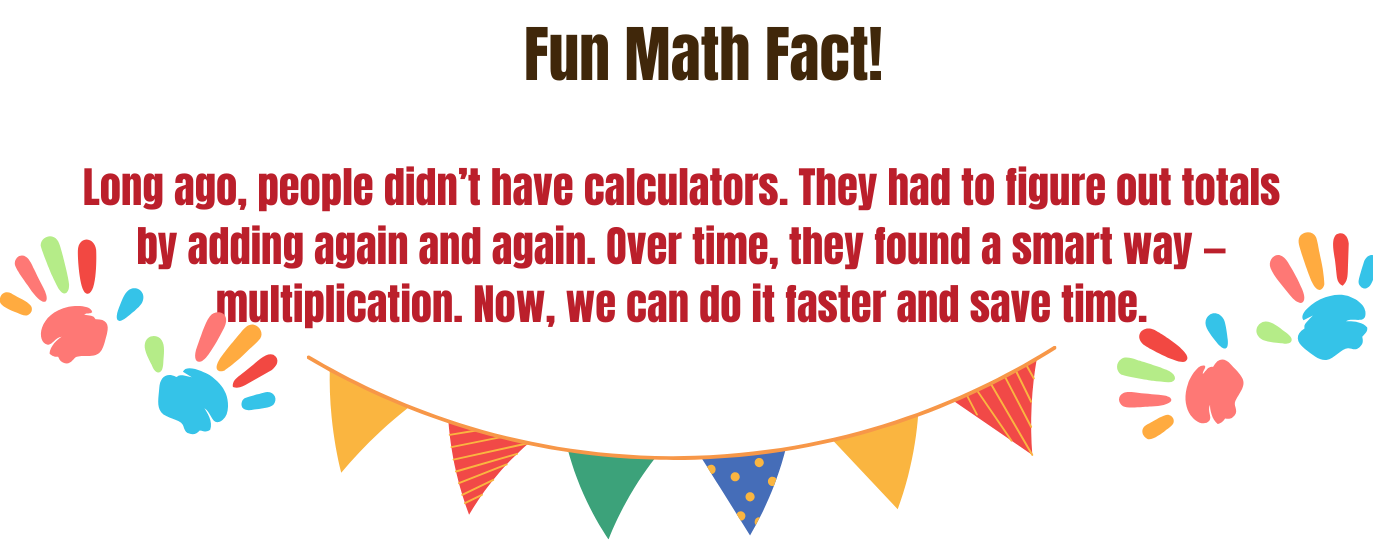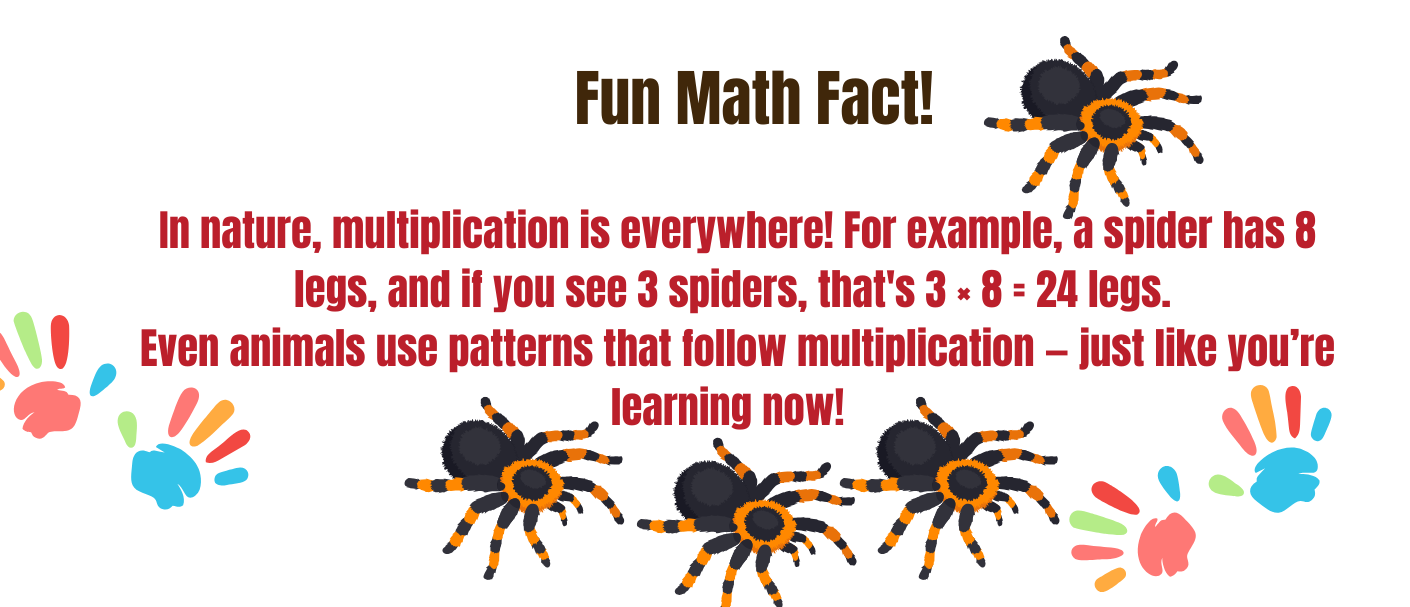Count equal groups
Change repeated addition into multiplication
Solve word problems using multiplication
Write multiplication sentences clearly
Use multiplication in everyday life


Sometimes we need to count things that come in groups. For example, if you have 4 bags and each bag has 5 marbles, how would you find the total number of marbles? Instead of adding 5 again and again, we use multiplication. It helps us find answers quickly and easily.
In this worksheet, you’ll practice counting equal groups, writing multiplication sentences, and solving real-life problems. Let’s get started.
There are 3 baskets. Each basket has 4 apples.
3 × 4 = 12 apples
A train has 5 compartments. Each compartment has 2 benches.
5 × 2 = 10 benches
Jake has 6 stacks of coins. Each stack has 3 coins.
6 × 3 = 18 coins
Lily planted 2 rows of flowers. Each row has 7 flowers.
2 × 7 = 14 flowers
There are 4 boxes. Each box has 5 toys.
4 × 5 = 20 toys
These are all examples of multiplication in daily life.
Multiplication helps in many places:
In school: counting books on shelves
At home: sharing snacks equally
In shops: calculating prices of more than one item
In games: counting scores or pieces
When we see equal groups, we can always use multiplication to find the total.
Emma reads 3 pages every day for 5 days.
Addition: 3 + 3 + 3 + 3 + 3 = 15
Multiplication: 5 × 3 = 15
There are 4 jars. Each jar has 6 candies.
Addition: 6 + 6 + 6 + 6 = 24
Multiplication: 4 × 6 = 24
Tom walks 2 kilometers every day for 7 days.
Addition: 2 + 2 + 2 + 2 + 2 + 2 + 2 = 14
Multiplication: 7 × 2 = 14
 Conclusion
ConclusionMultiplication is a simple way to count things in equal groups. It saves time and makes solving problems quicker. The more you practice, the better you’ll get.
Keep going. You’re doing great — one step at a time.
For a limited time
